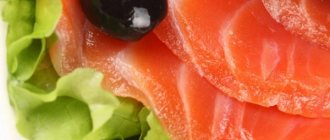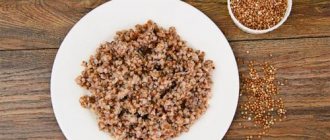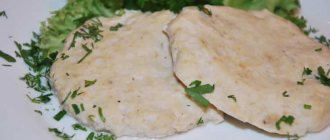Chemical composition
Omelette is a pretty healthy dish. It contains many nutrients, vitamins and minerals that are directly involved in the functioning of the body. This product is a source of vitamins such as:
- A, C, D, E;
- almost the entire group B;
- RR, N.
They take part in metabolism and support visual functions. Thanks to them, our skin maintains its firmness and elasticity. Vitamins affect the metabolism of fatty acids and cholesterol, participate in the synthesis of hormones and prevent anemia. They support the activity of the reproductive system and liver function. Vitamin D regulates the amount of phosphorus and calcium, thus ensuring bone strength.
If you regularly include this dish in your diet, then you do not suffer from mineral deficiency. In an omelet they are found in a wide range. 100 g of product contains the following elements:
- chlorine – 1132 mg;
- phosphorus – 153 mg;
- potassium – 150 mg;
- sulfur – 117 mg;
- sodium – 106 mg;
- calcium – 93 mg;
- magnesium – 13 mg;
- copper – 57 mcg;
- fluoride – 40 mcg;
- aluminum – 23 mcg;
- iodine – 15 mcg;
- strontium – 8 mcg;
- molybdenum – 7 mcg;
- cobalt;
- manganese;
- tin;
- selenium;
- chromium;
- zinc.
Important! The dish also contains dietary fiber, organic acids, cholesterol and sugars. Naturally, most of the omelet owes such a varied composition to eggs, covering the need for nutrients by 25%.
Recipe Omelette with cheese. Calorie, chemical composition and nutritional value.
Nutritional value and chemical composition of “Omelette with cheese”.
The table shows the nutritional content (calories, proteins, fats, carbohydrates, vitamins and minerals) per 100 grams of edible portion.
| Nutrient | Quantity | Norm** | % of the norm in 100 g | % of the norm in 100 kcal | 100% normal |
| Calorie content | 127.8 kcal | 1684 kcal | 7.6% | 5.9% | 1318 g |
| Squirrels | 11.1 g | 76 g | 14.6% | 11.4% | 685 g |
| Fats | 8 g | 56 g | 14.3% | 11.2% | 700 g |
| Carbohydrates | 2.9 g | 219 g | 1.3% | 1% | 7552 g |
| Water | 77.2 g | 2273 g | 3.4% | 2.7% | 2944 g |
| Ash | 0.92 g | ~ | |||
| Vitamins | |||||
| Vitamin A, RE | 130.9 mcg | 900 mcg | 14.5% | 11.3% | 688 g |
| Retinol | 0.14 mg | ~ | |||
| beta carotene | 0.03 mg | 5 mg | 0.6% | 0.5% | 16667 g |
| Vitamin B1, thiamine | 0.035 mg | 1.5 mg | 2.3% | 1.8% | 4286 g |
| Vitamin B2, riboflavin | 0.246 mg | 1.8 mg | 13.7% | 10.7% | 732 g |
| Vitamin B4, choline | 129.2 mg | 500 mg | 25.8% | 20.2% | 387 g |
| Vitamin B5, pantothenic | 0.727 mg | 5 mg | 14.5% | 11.3% | 688 g |
| Vitamin B6, pyridoxine | 0.071 mg | 2 mg | 3.6% | 2.8% | 2817 g |
| Vitamin B9, folates | 3.134 mcg | 400 mcg | 0.8% | 0.6% | 12763 g |
| Vitamin B12, cobalamin | 0.279 mcg | 3 mcg | 9.3% | 7.3% | 1075 g |
| Vitamin D, calciferol | 1.133 mcg | 10 mcg | 11.3% | 8.8% | 883 g |
| Vitamin E, alpha tocopherol, TE | 0.309 mg | 15 mg | 2.1% | 1.6% | 4854 g |
| Vitamin H, biotin | 10.85 mcg | 50 mcg | 21.7% | 17% | 461 g |
| Vitamin K, phylloquinone | 0.2 mcg | 120 mcg | 0.2% | 0.2% | 60000 g |
| Vitamin RR, NE | 1.813 mg | 20 mg | 9.1% | 7.1% | 1103 g |
| Niacin | 0.106 mg | ~ | |||
| Macronutrients | |||||
| Potassium, K | 78.37 mg | 2500 mg | 3.1% | 2.4% | 3190 g |
| Calcium, Ca | 32.1 mg | 1000 mg | 3.2% | 2.5% | 3115 g |
| Magnesium, Mg | 6.79 mg | 400 mg | 1.7% | 1.3% | 5891 g |
| Sodium, Na | 214.73 mg | 1300 mg | 16.5% | 12.9% | 605 g |
| Sera, S | 95.22 mg | 1000 mg | 9.5% | 7.4% | 1050 g |
| Phosphorus, P | 107.7 mg | 800 mg | 13.5% | 10.6% | 743 g |
| Chlorine, Cl | 302.78 mg | 2300 mg | 13.2% | 10.3% | 760 g |
| Microelements | |||||
| Iron, Fe | 1.409 mg | 18 mg | 7.8% | 6.1% | 1278 g |
| Yod, I | 9.56 mcg | 150 mcg | 6.4% | 5% | 1569 g |
| Cobalt, Co | 5.65 mcg | 10 mcg | 56.5% | 44.2% | 177 g |
| Manganese, Mn | 0.0171 mg | 2 mg | 0.9% | 0.7% | 11696 g |
| Copper, Cu | 47.42 mcg | 1000 mcg | 4.7% | 3.7% | 2109 g |
| Molybdenum, Mo | 3.755 mcg | 70 mcg | 5.4% | 4.2% | 1864 |
| Selenium, Se | 16.149 mcg | 55 mcg | 29.4% | 23% | 341 g |
| Fluorine, F | 30.78 mcg | 4000 mcg | 0.8% | 0.6% | 12995 g |
| Chromium, Cr | 2.24 mcg | 50 mcg | 4.5% | 3.5% | 2232 g |
| Zinc, Zn | 0.6233 mg | 12 mg | 5.2% | 4.1% | 1925 |
| Digestible carbohydrates | |||||
| Mono- and disaccharides (sugars) | 0.4 g | max 100 g | |||
| Lactose | 0.005 g | ~ | |||
| Essential amino acids | |||||
| Arginine* | 0.442 g | ~ | |||
| Valin | 0.431 g | ~ | |||
| Histidine* | 0.19 g | ~ | |||
| Isoleucine | 0.336 g | ~ | |||
| Leucine | 0.604 g | ~ | |||
| Lysine | 0.504 g | ~ | |||
| Methionine | 0.235 g | ~ | |||
| Methionine + Cysteine | 0.403 g | ~ | |||
| Threonine | 0.341 g | ~ | |||
| Tryptophan | 0.112 g | ~ | |||
| Phenylalanine | 0.364 g | ~ | |||
| Phenylalanine+Tyrosine | 0.632 g | ~ | |||
| Nonessential amino acids | |||||
| Alanin | 0.397 g | ~ | |||
| Aspartic acid | 0.688 g | ~ | |||
| Glycine | 0.235 g | ~ | |||
| Glutamic acid | 0.99 g | ~ | |||
| Proline | 0.224 g | ~ | |||
| Serin | 0.52 g | ~ | |||
| Tyrosine | 0.269 g | ~ | |||
| Cysteine | 0.162 g | ~ | |||
| Sterols (sterols) | |||||
| Cholesterol | 293.44 mg | max 300 mg | |||
| Saturated fatty acids | |||||
| Saturated fatty acids | 1.5 g | max 18.7 g | |||
| 14:0 Miristinovaya | 0.022 g | ~ | |||
| 15:0 Pentadecane | 0.006 g | ~ | |||
| 16:0 Palmitinaya | 1.147 g | ~ | |||
| 17:0 Margarine | 0.017 g | ~ | |||
| 18:0 Stearic | 0.492 g | ~ | |||
| 20:0 Arakhinovaya | 0.017 g | ~ | |||
| Monounsaturated fatty acids | 2.558 g | min 16.8 g | 15.2% | 11.9% | |
| 16:1 Palmitoleic | 0.218 g | ~ | |||
| 17:1 Heptadecene | 0.006 g | ~ | |||
| 18:1 Oleic (omega-9) | 2.289 g | ~ | |||
| 20:1 Gadoleic (omega-9) | 0.022 g | ~ | |||
| Polyunsaturated fatty acids | 0.649 g | from 11.2 to 20.6 g | 5.8% | 4.5% | |
| 18:2 Linolevaya | 0.616 g | ~ | |||
| 18:3 Linolenic | 0.034 g | ~ | |||
| 20:4 Arachidonic | 0.056 g | ~ | |||
| Omega-3 fatty acids | 0.1 g | from 0.9 to 3.7 g | 11.1% | 8.7% | |
| Omega-6 fatty acids | 0.9 g | from 4.7 to 16.8 g | 19.1% | 14.9% |
The energy value of Omelette with cheese is 127.8 kcal.
- Serving = 277 g (354 kcal)
Primary Source: Created in the application by the user. Read more.
** This table shows the average levels of vitamins and minerals for an adult. If you want to know the norms taking into account your gender, age and other factors, then use the “My Healthy Diet” application.
How many calories are in an omelet?
KBZHU dish, that is, its calorie content and BJU content per 100 grams is:
- calorie content – 120 kcal;
- proteins – 10 g;
- fats – 16 g;
- carbohydrates – 2 g.
Important! These figures are averages and relate exclusively to the standard set. In general, the classic omelet is a French dish that is prepared from eggs alone. They are mixed, but not beaten, add salt and pepper. Then fried in butter. Contrary to popular belief, a French omelette should not be airy, so it is prepared without covering the pan. First, fry one side of the pancake, then turn it over to the other. When ready, it is usually rolled into a tube.
In France they say that any self-respecting chef must, first of all, be able to cook an omelet. In our country, the dish is prepared with great variety, expanding it with various ingredients, for example, with vegetables. Omelette with tomatoes, onions, bell peppers, and herbs is very popular. Some people prefer to roast it with broccoli. To increase the satiety of the dish, it is made with ham or sausage, sausages, seasoned with cheese and seafood, bacon, boiled rice, mushrooms and even pasta are added. When frying, use lard instead of oil. For those who adhere to a diet, they have to be content with an omelette on the water.
Important! Depending on the products included in the dish, its calorie content also changes.
With milk
This cooking option is considered traditional for us. It is prepared quite simply. You should adhere to the following steps:
- 1 egg is mixed with 25 ml of milk;
- beat the mixture until smooth, then pepper and salt;
- Place a small amount of butter on a hot frying pan (you can replace it with sunflower oil);
- pour the egg-milk mixture, cover with a lid and simmer over low heat until cooked.
The number of calories per 100 g of each ingredient is as follows:
- egg – 157 kcal;
- milk with fat content 3.2% – 60 kcal;
- Butter “Krestyanskoye” – 660 kcal.
The calorie content of a dish depends on the number of ingredients. For an omelet made from 1, 2, 3 and 4 eggs, it will not be the same. So, if a dish is prepared with 1 egg, it contains approximately 106 kcal, from 3 - 125 kcal.
With tomatoes
If an omelette with tomatoes is prepared with the addition of milk, then its calorie content is 150 calories per 100 g. But you can prepare the dish without milk, because the tomatoes will release quite a lot of juice. The cooking process is as follows:
- cut 100 g of onion into half rings and fry it, stirring constantly, in olive oil;
- add 200 g of tomatoes, cut into slices, and simmer for another 2 minutes;
- beat 2 eggs, salt and pepper the mixture, pour it over the vegetables;
- keep the mixture on the fire until fully cooked.
Omelet with cheese
Omelette with cheese, whose calorie content is approximately 340 kcal per 100 g, can be cooked in a frying pan or in the oven.
The easiest way is to add 50-100 g of grated cheese to a regular egg mixture and beat again. You can skip milk or water and use a tablespoon of mayonnaise or sour cream instead. Pour the mixture into a greased frying pan and fry over low heat for five minutes on each side.
If using an oven, prepare the egg mixture in the same way, but do not add cheese. The mass is also poured into a frying pan or a special form and placed in a preheated oven for five to seven minutes over low heat.
After this time, remove the omelette from the oven and place the cheese on the surface, leaving a little for sprinkling. Then carefully pry the omelette from one edge, lift it and fold it in half. Sprinkle the resulting “pie” with the remaining cheese and place in the oven for another five minutes. Upon completion, it is advisable not to remove the dish immediately, but to let it stand in the switched off oven for another minute or two.
Needless to say, the taste of an omelette with cheese improves significantly with the addition of sausage, ham, sausages, chicken, mushrooms, tomatoes and other ingredients? The price for a richer breakfast will be more calories, but you'll have a whole day to burn them off.
How to reduce the calorie content of an omelet?
A low-calorie omelette can be obtained by eliminating oil from its composition. But you need to understand that in this case it should be cooked in one of the following ways:
- in the oven;
- in a slow cooker;
- in a steamer;
- in the microwave.
Or you can use a regular package. To do this, pour a beaten mass of 3 eggs and 150 ml of milk into a bag and tie it tightly. For reliability, the resulting bag is placed in another one, also tied well. Pour 1 liter of water into a saucepan and place on fire. Gradually lower the bag into boiling water. Cook the mixture over low heat for 25 minutes. The calorie content of the dish will be 85 kcal.
Another way to reduce the fat content of an omelet is to make it with only whites and replace the milk with water. If you can’t give up yolks, then reduce the number of eggs altogether. For example, instead of 2 eggs, take one and replace the second with vegetables and herbs. Use dill, basil, parsley. For true gourmets, oregano, cilantro, rosemary or celery are suitable.
Ways to reduce the calorie content of an omelet
- We prepare the product using household appliances. An omelet in a slow cooker or double boiler has slightly fewer calories. Naturally, such an omelette will not have the delicious crust that many people love;
- We reduce the number of eggs in the omelet to a reasonable limit and add various vegetables, herbs, do not use mayonnaise and ketchup;
- We prepare the omelette without yolks, using high-quality water (melt). Any lazy person who has a refrigerator with a freezer can prepare melt water;
- We prepare an omelette without using any oil (even the “favorite” of all nutritionists, olive oil).
How many calories are in a 2 egg omelette with milk?
The calorie content of 100 grams of an omelet made from two eggs is 172 kcal. That is, the calorie content of an omelet made from two eggs increases by the energy value of one egg (approximately).
After such a simple conclusion, it is easy to answer the question: “How many calories are in an omelet of 3 eggs with milk?” - 216 kcal.
You can reduce the calories in this omelet recipe by replacing the milk with water. After all, the calorie content of an omelet with milk is much higher than that of a cooked product with water.
And then the admirer of chicken eggs will not ask the question that is framed in the subtitle, but only: “How many calories are in an omelet made from 2 eggs?”
Below we will look at ways to reduce the calorie content of an omelet made from 2 yolks and 3 whites of eggs with milk.
How to cook a classic omelet?
The basis is elementary. Place the frying pan on the fire, pour in a little vegetable oil or add about twenty grams of butter - whatever you like. While all this is heating up, beat a couple of eggs with two tablespoons of milk or water, salt and pepper to taste. Professional chefs beat the yolks and whites separately and then combine them, so if you have some free time, try this option. Then pour the mixture into the pan and fry until done.
A regular omelet made from 2 eggs has a calorie content of about 120 kcal per 100 g. If you make it only from whites, then 85 kcal, since yolks have a higher energy value - 50-55 kcal versus 17 kcal in whites.
The calorie content of an omelet with milk instead of water is significantly higher - 180 kcal per 100 g of dish. You can reduce the indicator by using milk with a fat content of less than 2% and eliminating the yolks.
How many calories are in an omelet with tomatoes?
The calorie content of an omelet with tomatoes increases by the energy value of vegetables: 100 g of tomato – 30 kcal. An omelet with tomatoes produces more liquid, which can be removed in various ways.
Tomatoes, bell peppers, pre-fried onions can be placed:
- In an omelette with sausage;
- In an omelette with ham;
- In an omelette with sausage;
- In an omelet with cheese, lard and other products with a high degree of fat content.
Nutritionists rightly believe that, taking into account the quality of modern sausage and dairy products, it is better to dilute an omelet with vegetables with “good” water, fry in vegetable (olive) oil, without any meat additives at all, sprinkle the finished product with various herbs (dill, parsley , basil). To reduce the energy value of an omelet, you can remove the yolk from the eggs by adding a certain amount of flour to the omelet (exactly how much depends on the person’s culinary preferences).
Low calorie omelettes
This is a classic omelette without any additives or an omelette with vegetables. True, if you are watching your figure, you need to be careful when choosing the latter.
For example, the calorie content of an omelet with tomatoes is only 165 kcal per 100 g. But, firstly, if cherry tomatoes are used, then they contain a lot of sugar, and the energy value will be higher. Secondly, the tomato adds sourness to the dish, which stimulates the appetite.
In addition to tomatoes, almost all vegetables can be added to an omelette. The most commonly used are bell peppers, zucchini, green beans and frozen mixed vegetables.
In general, even those who are desperate to lose weight can afford a hearty breakfast, since in the first half of the day the metabolism is faster and there is enough time to burn the excess. But if numbers are important to you, then when adding additional components to a regular omelet of 2 eggs (the calorie content of which, as we have already said, is 120 kcal), simply sum up its energy value with the number of calories of the corresponding ingredient.
The most common omelette additions:
- milk – 42 kcal with 1% fat content;
- cheese - at least 290 kcal;
- tomatoes – 18-20 kcal;
- sweet pepper – 28 kcal;
- mushrooms – 28 kcal;
- Brussels sprouts – 43 kcal;
- chicken meat – 220 kcal;
- ham – 145 kcal;
- olives – 115 kcal;
- parsley – 36 kcal;
- dill – 315 kcal;
- onion – 40 kcal.
You may have been surprised by the high calorie content of dill, but it is given per 100 g. This is a fairly large bunch of greens; you are unlikely to need that much for one serving.
By the way, egg powder produces a very average-tasting omelette, the calorie content of which is 210 kcal. Almost the same amount of energy is contained in a dish of “normal” eggs with the addition of ham, but the latter will bring more gastronomic pleasure.
How many calories are in an omelet without butter?
Calorie content of 100 grams of various oils with which most people prepare omelettes:
- Olive – 198 kcal;
- Sunflower – 578 kcal;
- Creamy – 748 kcal;
- Peanut and corn - 899 kcal each.
We remove 20 - 30 grams of oil from the recipe, and we get a significant saving in kilocalories consumed. Of course, you won’t be able to fry an omelette in a frying pan on a gas stove without any oil, but preparing a delicious product in the oven or slow cooker is easy and simple. You can also cook an omelet without oil in the microwave, but...
6. Omelette of 2 eggs with milk and tomatoes
The kilocalorie content in an omelet made from two eggs depends on their size and weight - it can vary from 30 to 70 grams, that is, the average value will be somewhere around 40 grams.
The calorie content of a simple omelet made from two eggs and milk, cooked with a minimum amount of butter, is 161 kcal.
The most popular variation of this dish involves adding tomatoes.
An omelette made with milk with two eggs and the addition of a tomato contains 151 kcal per 100 grams.
To reduce the energy value of the dish, you can use skim milk or use a few more techniques.
7. How many calories are in an omelet made from 1 egg and milk?
The calorie content of this recipe depends on the method of preparing the dish: in the oven, in a slow cooker, fry in a frying pan on a gas stove.
Preparing an omelet by frying on the stove is the most high-calorie and “dangerous” option for the body: during frying, carcinogenic substances are formed to a greater or lesser extent in various fats, which negatively affect metabolic processes in the body.









